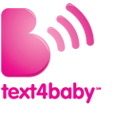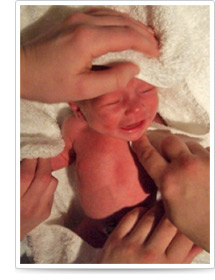 Text messaging offers an opportunity to address health inequalities given that cell phones are nearly ubiquitous in the United States, and text messaging can be used to reach populations at the highest risk for poor health outcomes - low-income and young women, particularly those who identify as Hispanic or African-American. Compared to their older, Caucasian counterparts, young adults, Hispanics, and African-Americans are more likely to own a cell phone, text more frequently, and do most of their online browsing on their mobile device. Among U.S. 18-29 year old cell phone owners, 95% send or receive text messages, and 79% of African Americans and 83% of English-speaking Hispanics text. Furthermore, 99% of all text messages are read and 90% within the first three minutes of receipt.
Text messaging offers an opportunity to address health inequalities given that cell phones are nearly ubiquitous in the United States, and text messaging can be used to reach populations at the highest risk for poor health outcomes - low-income and young women, particularly those who identify as Hispanic or African-American. Compared to their older, Caucasian counterparts, young adults, Hispanics, and African-Americans are more likely to own a cell phone, text more frequently, and do most of their online browsing on their mobile device. Among U.S. 18-29 year old cell phone owners, 95% send or receive text messages, and 79% of African Americans and 83% of English-speaking Hispanics text. Furthermore, 99% of all text messages are read and 90% within the first three minutes of receipt.
A service of the nonprofit National Healthy Mothers, Healthy Babies Coalition, text4baby is the U.S.’s largest and only free mobile service. The program sends health and safety information to expecting and new moms personalized to their due date or baby’s birth date.
The messages are offered in either English or Spanish and cover prenatal care, breastfeeding, nutrition, baby’s development, safety and more. Many of text4baby’s messages link to mobile pages, videos and health hotlines which connect moms to additional resources. Interactive features, including appointment reminders, quizzes, and opt-in modules allow moms to customize text4baby to their needs.
Text4baby aims to improve maternal and child health outcomes among low-income and traditionally underserved pregnant women and mothers with babies under age one. This free service is the result of a public-private partnership with Founding Sponsor Johnson & Johnson, founding partners Voxiva and The Wireless Foundation, and over 1000 national, state and local organizations including the American College of Obstetricians and Gynecologists, Centers for Disease Control and Prevention, and the American Academy of Pediatrics
Text4baby’s success is demonstrated by internal and external evaluation of the service. Participant feedback shows moms like the service with 94% saying they would refer a friend to text4baby. External evaluations show text4baby is facilitating interaction with health providers, improving adherence to appointments, strengthening access to health services, and participants are significantly more likely to report they are better prepared for motherhood compared to non-participants.
Text4baby is utilizing a popular communications tool to share critical health and safety information. There are a lot of things to remember when you’re pregnant or a new mom. Text4baby makes it easy to get important information – and it’s free. Women can sign up by simply texting BABY (or BEBE for Spanish) to 511411.
Catch the presentation "Texting as a Valuable Tool for Maternal and Child Health" at the GOLD Perinatal Online Conference 2013
By Robin Grille, BA, Dip Couns. / Interactive Psych
 For a century, obstetrics has been the dominant paradigm for human labor, since obstetrician Dr Joseph DeLee, author of The Principles and Practice of Obstetrics, argued that childbirth is a pathologic process. In an article published in the first issue of the American Journal of Obstetrics and Gynecology, DeLee called for complete medical control over labor.
For a century, obstetrics has been the dominant paradigm for human labor, since obstetrician Dr Joseph DeLee, author of The Principles and Practice of Obstetrics, argued that childbirth is a pathologic process. In an article published in the first issue of the American Journal of Obstetrics and Gynecology, DeLee called for complete medical control over labor.
Until recently, this monocular approach had eclipsed the critical developmental neuropsychological needs of mothers and infants, with tragic results that are only now beginning to be widely accepted and understood. Furthermore, it is increasingly suspected that a large proportion of medical complications at labor, while seemingly justifying obstetric interventionism, are in fact iatrogenic. Much of birth and perinatal trauma could be forestalled if the mother’s psychological needs were prioritized.
In the last trimester of gestation, during labor and in the critical hours and days that follow; a most delicate bonding process unfolds in which the mother’s emotional wellbeing is absolutely central to the quality of mother-infant attachment, affecting breastfeeding, post-partum mood, as well as the psychological, digestive and immunological health of the child for a lifetime. Even without access to narrative memory of our own birth and the moments thereafter, ‘implicit memory’ systems in the brain enable us to remember the emotional content of experiences dating back to the third trimester – and these ‘implicit memories’ continue to influence us psychologically and physiologically for life.
Many of the interventions imposed in hospitals are incompatible with - even eclipsing of – the conditions that enable the vital, highly emotionally-charged (sometimes described as blissful), mother-infant bonding that is so foundational for optimal neuropsychological health. Prenatal and perinatal psychology and the science of Primal Health now make it clear that maternal wellbeing and emotional balance are paramount pre- and perinatally. Conventional hospital and birthing room practice must be re-evaluated to accommodate this emerging imperative.
Frequently, what is most supportive of a psychologically optimal passage through this formative period involves supporting (in the mother) the impulses that seem to come most naturally. However, it is important to note that the abundance of new information about the long-term health impacts of birth or perinatal trauma, and the crucial significance of primal bonding, can at times cause anxiety for parents, particularly if childbirth did not go according to plan.
If, as practitioners, we merely inform parents about the centrality of natural childbirth and healthy post-partum attachment, we risk contributing to their anxiety. Denying or minimizing the long-term effects of the prenatal and perinatal experience, on the other hand, is not an option. Knowledge must be backed up by support; both practical and emotional.
The conditions that enhance mothers’ psychological capacity for attachment revolve around healthy connectedness – to community, family and empathic practitioners – as well as freedom form conflict and overwhelming stress. Health practitioners can be brokers for the mothers’ connectedness. We can also provide an essential empathic milieu by validating her heightened emotional needs at this time.
Much anxiety can be allayed if we provide practical information about how to treat any post–traumatic stress - in the mother and her child - if optimal birthing conditions are not possible. Understanding trauma is essential so that a raft of responses can be provided. Touch, holding, rhythmic rocking, melodic sound, and oral satisfaction at the breast are just some of the most powerful armory of modalities that help to restore the child’s hormonal, cardiac and enteric balance to homeostasis after traumatic episodes. These resources for psychological and somatic healing can ensure a well-protected bonding time, as well as giving parents the confidence to respond to any unexpected hiccups that impact on early attachment.
Robin Grille is presenting The Pre- and Perinatal Gateway to Lifetime Wellness – a communication guide for practitioners at the GOLD Perinatal Online Conference 2013
By Prof Dr Elizabeta Zisovska, PhD
Pain in newborns is very often unrecognized and undertreated, mainly because of the lack of awareness among health care providers of pain perception, assessment, and pain management in neonates. There are two crucial facts regarding newborns and pain:
 For the neonate, two kinds of non-verbal responses are very significant: Gross physical movements and physiological response measurements. The former are recognized by simple direct observation, while the latter requires specific equipment to monitor blood pressure and stress hormone levels. Because the neonates cannot express the pain they feel, they depend on others to recognize, assess and manage it for them. The cry response is increasingly important, as researchers are now able to differentiate between different kinds of cry. These two facts give way to understanding the reason for the underestimation of neonatal pain. It has been previously thought that newborns, especially premature ones, are incapable of experiencing any pain due to the immaturity of their nervous system and incomplete myelinisation; however, today it is clear that newborns indeed do feel pain, and that it is possible for others to perceive and manage neonatal pain experiences.
For the neonate, two kinds of non-verbal responses are very significant: Gross physical movements and physiological response measurements. The former are recognized by simple direct observation, while the latter requires specific equipment to monitor blood pressure and stress hormone levels. Because the neonates cannot express the pain they feel, they depend on others to recognize, assess and manage it for them. The cry response is increasingly important, as researchers are now able to differentiate between different kinds of cry. These two facts give way to understanding the reason for the underestimation of neonatal pain. It has been previously thought that newborns, especially premature ones, are incapable of experiencing any pain due to the immaturity of their nervous system and incomplete myelinisation; however, today it is clear that newborns indeed do feel pain, and that it is possible for others to perceive and manage neonatal pain experiences.
Untreated pain in the neonate gives ground for a number of metabolic and homeostatic changes including an increased requirement for oxygen, a reduction in the efficiency of gas exchange in the lungs, alteration in cerebral neuroanatomy, avoidance and alteration in response to stimuli, developmental delays, emotional disorders, and many other immediate and long-term adverse effects. Despite the clinical importance of neonatal pain, current medical practices continue to expose infants to repetitive, acute or prolonged pain experiences. Particularly in Neonatal Intensive Care Units (NICU), procedural pain is a huge, unsolved issue that, due to the need and availability of modern technology, is a continuously growing problem.
“Even if not expressed as conscious memory, memories of pain may be recorded biologically and alter brain development and subsequent behavior”. Prior to treatment, the newborn must be properly assessed for any pain that is experienced. Management of pain in the neonate includes environmental, behavioral and pharmacological interventions, with the same end-goal: to alleviate, reduce, and in the best scenario eliminate, the experience of pain. Therefore, within clinical settings for neonatal care, written, evidence-based Clinical Guidelines for pain management should be developed, in order to improve the overall successful development of each individual. Healthy and happy children are the wealth of each society.
Dr. Elizabeta Zisovska is presenting Assessment and Management of Procedural Pain in Neonates at GOLD Perinatal Care Online Conference this coming November.